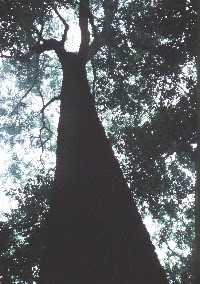The switchgrass-sedge grassland of Great Meadow is now
largely invaded by cattails and reeds.
The birds were actually better this time around. In June of 1976, pickings at Great Meadows
in Essex, Connecticut were a bit slim, with gulls being among the most abundant
species present. Aside from the
ubiquitous Common Yellowthroats, Swamp Sparrows, Marsh Wrens and lone Bobwhite,
there was not much of interest present.
In contrast, during this June of 2016, gulls were uncommon and Bobwhites
had disappeared, but multiple Ospreys were nesting and several Purple Martins
flew overhead. Both were all but absent
in earlier years. Great Egrets,
confined to the river mouth in the 1970s, were also now conspicuously present,
as were Rough-winged Swallows, which had replaced formerly common Bank
Swallows. To round things out, a
Spotted Sandpiper fed along the banks of the adjacent Connecticut River and a
Common Tern explored the river and adjacent tidal creeks.
Forty years have now passed since my first investigation of
this extensive lowland bordering the lower Connecticut River. I had initially gone there to study the
extended ecotone between the site’s weakly brackish marsh and adjacent
upland. I thought the wet, grassy
meadow that developed there was about as close as southern New England could
come to having an extensive natural grassland, and I wanted to document its
nature so that I might determine its persistence over time. Toward that end, I inventoried the entire
site and also established a study plot to quantify the presence of key
community members. My plot, chosen to
be representative of the site as a whole (although I noted that there was a
gradient in species composition from the north to south end), demonstrated that
the predominant species were switchgrass (Panicum virgatum), a short
species of bulrush- Scirpus americanus, and a sedge- Eleocharis palustris. In all, I found 11 herbaceous species
occupying the 100 m2 plot.
In 1983, I re-visited the meadow and observed that the
community was much as it had been seven years before. However, during this 2016 survey, I found that the ecotone had
changed dramatically, with cattails and reeds invading much of it. Furthermore, S. americanus now appeared to be present primarily along the
edge of the Connecticut River. This
observation left me perplexed enough that I began to doubt my initial
identification, but upon later examining specimens I had collected both in 1976
and 1983, I found that my initial determination had been correct. In the place of this species, I found that
the sedges S. fluviatilis, S. atrovirens and the forb Peltandra
virginica had become widespread. I
had recorded these species on my 1976 surveys, but none had occurred in the
study plot, indicating that they were less common than now. Switchgrass, although still present, was
also not nearly as common as it had once been.
Even into 1983, I was still describing the site as a Panicum
meadow, but this characterization no longer held. Moreover, the entire meadow itself had shrunk from about 6 ha in
1976 to about two ha at present. All
these changes suggested that the site had become wetter over time, with the new
dominant species t.ypical of emergent marsh rather than upland ecotone. Human manipulation in the form of expanded
mowing further assisted with reducing the meadow’s extent and, indeed, portions
of the meadow have in the past been mowed for hay.
So what is to be gleaned from such long-term
observations? Well, first of all, I’ve
concluded that my initial characterization of the meadow as a wet, albeit
upland grassland was a bit generous.
With the benefit of now having examined all of the major herbaceous
wetlands of the lower Connecticut River for decades, I think that it is more
reasonable to characterize such meadows as simply vegetation zones within
larger marsh ecosystems. Furthermore,
it now is clear that such communities are not static entities, but are rather
dynamic associations that change over time in response to changing physical and
competitive environment as as well as to human manipulation.
Alas, the notion of naturally persistent grasslands in
southern New England is for me one that has become progressively harder to
believe in. We might still hold out
some hope for the reed-canary grass (Phalaris arundinacea) ecotones of
more completely freshwater marshes further inland, as Phalaris appears
to be aggressively competitive with other species. However, here again, it seems more reasonable to characterize
such habitats as simply marsh vegetation zones rather than upland systems. I suppose dune grass communities of the
coast, nominal though they are, hold the only real claim for being naturally
persistent southern New England grasslands.












